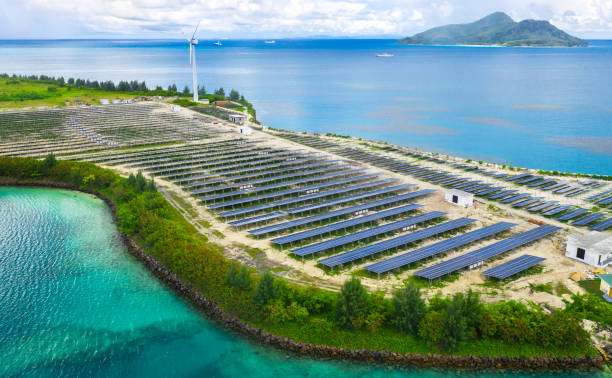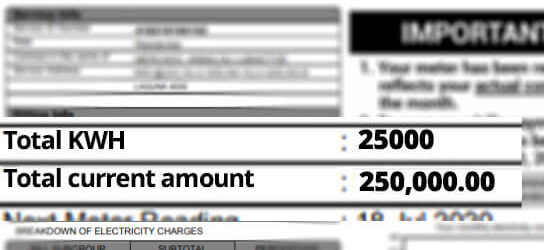Renewable energy is derived from resources that replenish naturally such as biomass, sun, wind, rain and geothermal heat. In the modern world where global warming and other environmental issues are becoming a great concern, harnessing energy from these resources has become increasingly important, if not imperative. The Philippines is a country that is frequently hit by the effects of global warming while also dealing with high energy demands. This is why for the Philippines, renewable energy is increasingly becoming important.
Types of Renewable Energy Sources Used in the Philippines

Source: Institute for Energy Economics and Financial Analysis | Photo Credit: Eco-Business
The Philippines has a mix of renewable energy sources, including solar, wind, hydro, and geothermal. The most commonly used sources of renewable energy in the Philippines are hydro and geothermal. As of 2020, the total installed capacity of hydro in the Philippines was 3,779 MW and the total installed capacity of geothermal was 1,928 MW. Solar and wind energy are relatively new in the Philippines, but they have been growing rapidly in recent years.

Source: DOE Energy Statistics 2020
https://www.doe.gov.ph/sites/default/files/pdf/energy_statistics/doe-pes-kes-2020.pdf
Capacity of Renewable Energy in the Philippines
As of 2020, the total installed capacity of renewable energy in the Philippines was 7,617 MW, which is about 15% of the country’s total installed capacity. This is a significant increase from 2015, when the total installed capacity of renewable energy was only 6,330 MW. However, there is still much room for growth, as the Philippines has a target of reaching 35.0 percent and 50.0 percent RE share in the power generation mix by 2030 and 2040
Source: DOE Energy Statistics 2020
https://www.doe.gov.ph/sites/default/files/pdf/energy_statistics/doe-pes-kes-2020.pdf
Government Initiatives and Policies
The Philippine government has implemented several policies to promote the use of renewable energy in the country. In 2017, the Department of Energy launched the Renewable Energy Market Roadmap, which outlines the government’s plans to increase the use of renewable energy in the country. The government has also offered incentives such as feed-in tariffs and tax exemptions to encourage private companies to invest in renewable energy. These initiatives have been successful in increasing the use of renewable energy in the Philippines.
The Philippine government has implemented several policies to promote the use of renewable energy in the country, such as the Renewable Energy Act of 2008 which provides the policy and legal framework for the promotion and development of renewable energy in the Philippines. Feed-in Tariff System which incentivizes investors and developers to put up renewable energy projects. Renewable Portfolio Standards and Solar Power Alliance of the Philippines.
In 2017, the Department of Energy also launched the Renewable Energy Market Roadmap, which outlines the government’s plans to increase the use of renewable energy in the country. These initiatives have been successful in increasing the use of renewable energy in the Philippines.
The Impact of Renewable Energy on the Philippine Economy

Source: IRENA Renewable Energy Employment by Country
https://www.irena.org/Data/View-data-by-topic/Benefits/Renewable-Energy-Employment-by-Country
It is no surprise that renewable energy has reduced the amount of greenhouse gas emissions in the country, but it also has a positive impact on the economy. The growth of the renewable energy sector has created job opportunities. In the solar photovoltaic (PV) sector alone, the number of jobs rose from 33,700 in 2019 to 41,035 in 2020 according to the eighth edition of Renewable Energy and Jobs: Annual Review 2021 by IRENA in collaboration with the International Labor Organization (ILO),It has also reduced the country’s dependence on imported fossil fuel, balancing the trade and mitigating the negative effects of fluctuating global fuel prices.
The Potential of Renewable Energy in Rural Areas
Renewable energy has the potential to supply energy to rural areas or remote communities. Due to the location of these areas, a huge amount of investment is needed to connect them to the main grid which is not feasible since these are small communities. Off-grid renewable energy plants such as solar or small-scale hydro can be easily transported and/or installed in these areas. These projects have the potential to improve the quality of life for people living in rural areas, as they can access electricity for lighting, heating, and other basic needs.
The Role of Renewable Energy in Reducing Greenhouse Gas Emissions
Greenhouse gas emissions are gasses that trap heat in the atmosphere, causing the Earth’s temperature to rise. Renewable energy can help reduce greenhouse gas emissions, as it does not emit harmful gasses into the atmosphere. The Philippines is one of the most vulnerable countries in the world when it comes to the impacts of climate change, and reducing greenhouse gas emissions is critical for the country’s future.
Conclusion
In conclusion, renewable energy is becoming increasingly important in the Philippines as the country seeks to address its energy needs while reducing its carbon footprint. The government has implemented several policies to promote the use of renewable energy, and the growth of renewable energy has had a positive impact on the Philippine economy.



